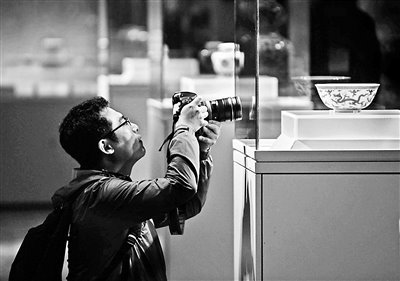"The Ming Dynasty Imperial Kiln Porcelain - Unearthed in the Jingdezhen Yuki Kiln Site and the Palace Museum's Conveyed Exhibition of Chenghua's Porcelain", "The Ming and Qing Yu Kiln Porcelain - Palace Museum and the Jingdezhen Ceramic Archeology New Achievements Exhibition", yesterday at the Palace Museum And the opening of the palace.

In the “Ming Dynasty Imperial Kiln Porcelain—National Palace Museum and Jingdezhen Ceramics Archaeology New Achievements Exhibitionâ€, a total of 165 exhibits were exhibited, most of which were Jingdezhen Yu Kiln Site and the porcelain excavated in the Palace Museum. In 2014, a burial pit of imperial kiln porcelain pieces was discovered in the area of ​​the Qing dynasty imperial palace of the National Palace Museum in the National Palace Museum. A large number of pieces of porcelain from Ming and Qing dynasties were uncovered. This was the first time outside the Yukio site in Jingdezhen that the remains of the Ming and Qing kiln porcelain were buried and buried. The archaeological findings of the use of porcelain in Imperial Kilns corresponded to the discovery of Imperial Kiln sites, which enabled the academic community to realize that the imperial kiln porcelains were under strict monopoly and control from the beginning of production to the end of use. Among the exhibits, the Hongwu Glazed Lihong tangled pattern bowl, the Kangxi colorful Magu Xianshou Tupan, the Kangxi Blue and White Dragonflower Dots along the basin, and the Yongzheng Porcelain Lapis and the Black Earth Plum and Bamboo Plate were all unearthed in the Nantaku Tiles. Burial pit. Among them, the Yongzheng Porcelain Lapis was a black and white bamboo pattern plate, and was the first time that the porcelain was unearthed in the archaeological excavation. No identical artifacts were found in the handed down products. The Taipei Palace Museum has a collection of black-and-white plum blossoms. It is the old residence of the Qing dynasty. It is similar, but it is different. The unearthing of the porcelain enamel plate of the Yongzheng Porcelain Paintings provided new important materials for exploring the characteristics of the porcelain enamel utensils during the Yongzheng period and revisiting the items of the handed down objects.
In the Nakamiya Pavilion of the Sai Palace, a VR video viewing interactive area is arranged. The audience wears VR glasses and can reach every corner of the archaeological site as they wish by operating handheld remote control devices. The kiln that burns porcelain, the enamel that holds the porcelain, and the tiles that are scattered on the construction site provide a panoramic view. This is the first time that VR video technology has been applied to the exhibition of the Palace Museum.